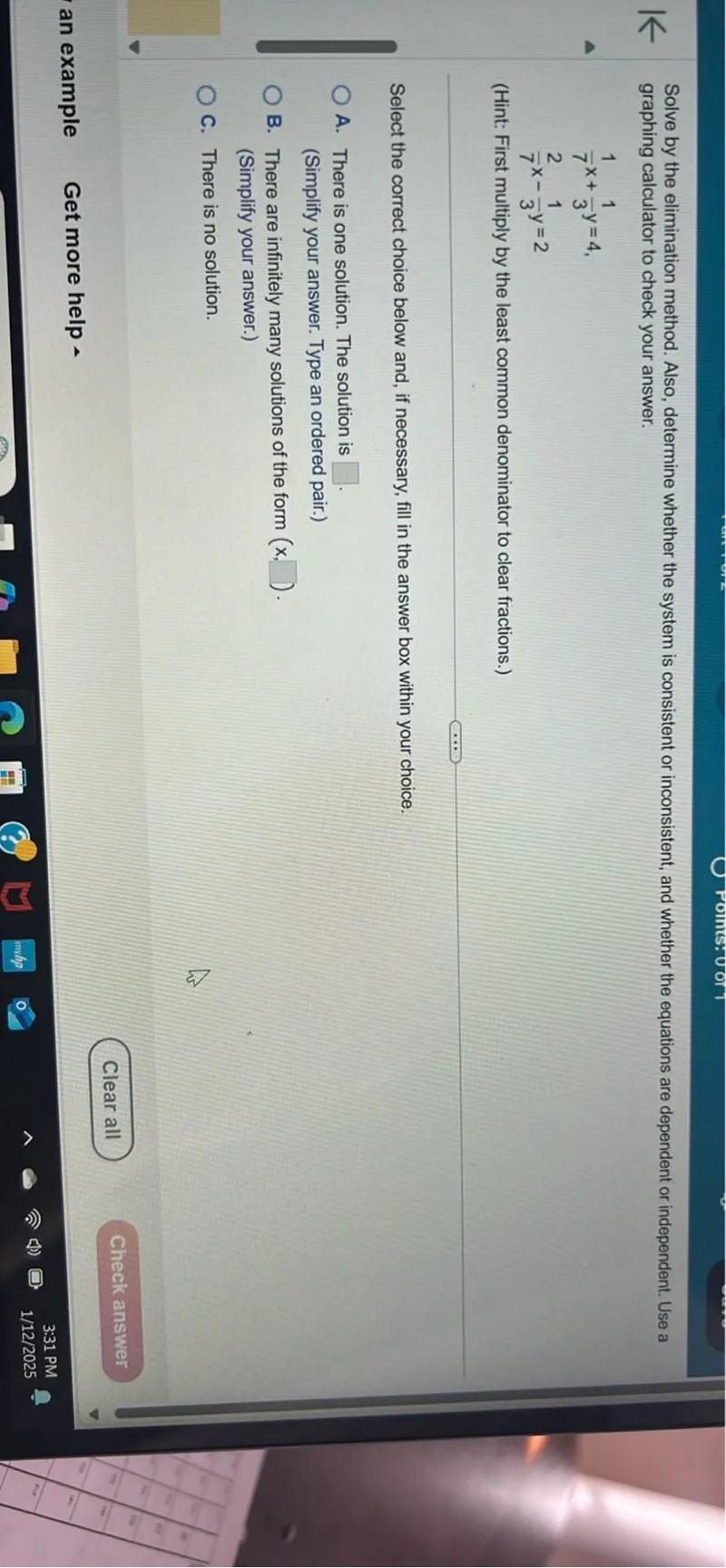Questions: Solve by the elimination method. Also, determine whether the system is consistent or inconsistent, and whether the equations are dependent or independent. Use a graphing calculator to check your answer. 1/7 x + 1/3 y = 4 2/7 x - 1/3 y = 2 (Hint: First multiply by the least common denominator to clear fractions.) Select the correct choice below and, if necessary, fill in the answer box within your choice. A. There is one solution. The solution is . (Simplify your answer. Type an ordered pair.) B. There are infinitely many solutions of the form ( x , ). (Simplify your answer.) C. There is no solution.

Transcript text: Solve by the elimination method. Also, determine whether the system is consistent or inconsistent, and whether the equations are dependent or independent. Use a graphing calculator to check your answer.
\[
\begin{array}{l}
\frac{1}{7} x+\frac{1}{3} y=4 \\
\frac{2}{7} x-\frac{1}{3} y=2
\end{array}
\]
(Hint: First multiply by the least common denominator to clear fractions.)
Select the correct choice below and, if necessary, fill in the answer box within your choice.
A. There is one solution. The solution is $\square$ $\square$.
(Simplify your answer. Type an ordered pair.)
B. There are infinitely many solutions of the form ( x , $\square$ ).
(Simplify your answer.)
C. There is no solution.





